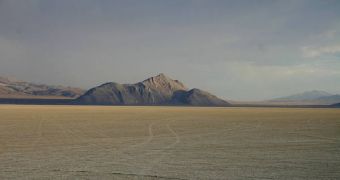The Great US Basin, which includes a large portion of Nevada and Utah, as well as regions of other surrounding states, is a peculiar formation consisting of small mountain ranges, deserts and valleys, and it's located near the West Coast of the country. Under it, geologists now believe, lies a giant cylindrical blob, entirely made up of cold rock material. The formation was discovered by Arizona State University (ASU) expert John West, who led a team of fellow scientists in analyzing the region. According to the text books, the strange occurrence is a lithospheric drip.
“The Earth's mantle, which lies below the thin outer crust we live on, consists of rock which deforms plastically on very long time scales due to the heat and pressure at depth. In any material which can flow (including the mantle), a heavy object will tend to sink through lighter material,” West explained, quoted by LiveScience. “Honey dripping off of a spoon is a visual aid to what we think the drip looks like. Dripping honey tends to lead with a large blob of honey, with a long tail of material following the initial blob,” he added.
In the lithosphere, this type of processes happens relatively often. That is to say, portions of dense materials get heated up by the planet's inner core, and begin to “fall” through the less dense molten rock underneath. As they do so, they create a very large trail of rocky material after them, pointing upwards in respect to the main blob's position. The formation that was discovered underneath Nevada, the expert says, stretches from a depth of seven miles to an estimate 310 miles (75 to 500 kilometers) below the surface, and has an average diameter of 30 to 60 miles (50 to 100 kilometers).
“We wondered how you could have something like a drip that is drawing material into its center when the surface of the whole area is stretching apart. But it turns out that there is an area right above the drip, in fact the only area in the Great Basin, that is currently undergoing contraction,” Matthew Fouch, who is also a researcher at ASU, shared. The Great Basin, as a whole, is known to have been engaged in a stretching for at least a few million years. The blob itself is estimated to have begun its journey 15 to 20 million years ago.
Details of the impressive finds appear in the May 24th issue of the respected scientific journal Nature Geoscience. The research was conducted using funds provided to the team by the US National Science Foundation (NSF).

 14 DAY TRIAL //
14 DAY TRIAL //